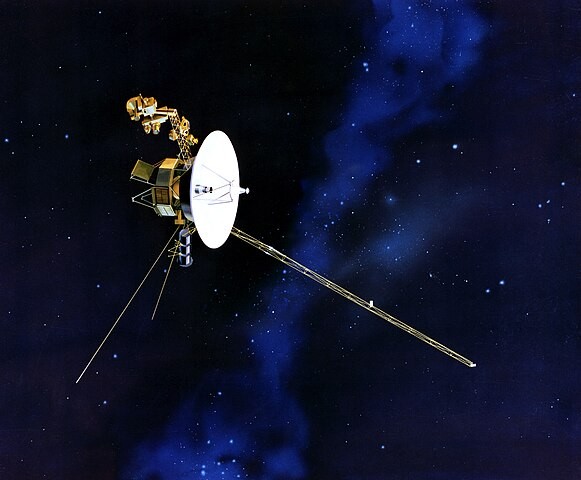
(Photo: Wikimedia Commons/NASA/JPL)
After months of trying to fix it, NASA engineers brought Voyager 1 back to life after it stopped transmitting a signal in November 2023. The experts were able to fix the space probe despite being 15 billion miles away from it.
How Did the NASA Engineers Fix the Voyager 1
Voyager 1 abruptly stopped sending its routine data stream in November. The stream included measurements from its scientific instruments and details about the spacecraft's health. Rather, the data stream from the spacecraft was completely nonsensical.
Experts on the ground found it challenging to determine the cause of the problem because the telemetry was illegible. They postulated that the FDS's memory bank could be the problem's source.
Last month, engineers made significant progress when they launched a unique command to "poke" Voyager 1's FDS and retrieve a readout of its memory. Thanks to this readout, engineers could identify the issue's location in the FDS. The FDS is responsible for packing scientific and technical data for transmission to Earth.
NASA was prepared to send a fix after a few weeks so that the FDS could start packing engineering data again. This data stream contains details on the spacecraft's condition, such as temperature readings and power levels. This command was transmitted to Voyager 1 via one of NASA's massive Deep Space Network antennae on Thursday (April 18). Voyager's ground crew continued to receive signals showing the spacecraft was still alive during the five months of troubleshooting. However, they did not know the specifics of Voyager 1's condition until Saturday (April 20).
"It's pretty much just the way we left it," said Linda Spilker, project scientist for NASA's two Voyager spacecraft at JPL. "We're still in the initial phases of analyzing all of the channels and looking at their trends. Some of the temperatures went down a little bit with this period of time that's gone on, but we're pretty much seeing everything we had hoped for. And that's always good news."
Voyager's ground team found that a single chip that held part of the FDS memory had malfunctioned, most likely due to an old hardware component or a cosmic ray strike. A portion of the computer's software was affected.
"That took out a section of memory," Spilker added. What they have to do is relocate that code into a different portion of the memory and then make sure that anything that uses those codes, those subroutines, knows to go to the new location of memory for access and to run it."
The defective chip only damaged only 3% of the FDS memory. Therefore, engineers had to transfer that code to a different memory bank rank.
The next step is to relocate the remaining three science data modalities. The primary distinction is that there is now an even tighter memory constraint.
Though they haven't decided or thoroughly considered the possibilities, they have some suggestions about possible locations for the code. They begin the first course of action this week.
According to Spilkeranalyzinggh the code segment responsible for encapsulating Voyager 1's scientific data in the FDS might take "a few weeks."
ALSO READ: Russia Blocks US and Japan's UN Resolution Preventing Dangerous Nuclear Arms Race in Space
What Is Voyager 1?
Voyager 1 was launched in 1977 to fly by Jupiter and Saturn. It crossed into interstellar space in August 2012 to collect data. Thus, the space probe has explored our solar system for over 45 years.
Voyager is the first human-made object to enter interstellar space and cross the heliosphere. At this boundary, the influences outside our solar system are more potent than those from our Sun.
Voyager has discovered many things in outer space, including the thin ring around Jupiter and its two Jovian moons, Thebe and Metis. It also found five new moons on Saturn, and its new ring is called the G-ring.
RELATED ARTICLE: What's Inside the Moon? Lunar Seismic Data Reveals Earth-Like Core
Check out more news and information on the Moon in Science Times.










!['Cosmic Glitch' in Einstein's Theory of General Relativity Could Be Explained in This New Scientific Tweak [Study]](https://1721181113.rsc.cdn77.org/data/thumbs/full/53435/258/146/50/40/cosmic-glitch-in-einsteins-theory-of-general-relativity-could-be-explained-in-this-new-scientific-tweak-study.jpeg)



